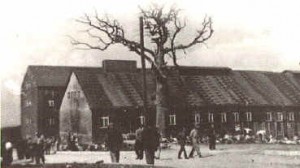
German wandervogel youth
Because so many Americans live in a historical vacuum, as though yesterday had no impact on today and today will not impact tomorrow, most have no idea what the roots of the modern Green Movement really are. There are traces of extreme environmentalism back to the days of the Greeks but the first unified, nationalistic approach to enacting strict green policies can be found in of all places Nazi Germany.
There had been a nominal green movement in Germany for over a century before Adolph Hitler rose to power. A certain romanticism about nature and natural remedies was popular in much of the Western world at the turn of the century and such was no different in Hitler’s homeland. As their Fuehrer began to enact sweeping Nazi environmental laws from 1933 through 1935, those outside his inner circle assumed Hitler understood their cause and simply wanted to be their champion. It was only in the decade that followed the more naïve in Germany’s green movement finally realized what they had helped usher in.
Political totalitarian environmentalism was born in the Third Reich. In fact the slogan of the Reich Nature Protection Act was, “it shall be the whole landscape.” By the mid-30s upwards of 70 percent of German greens were Nazi Party members. Nazi party member foresters and veterinarians were greater in number than medical doctors and teachers. Ironically the German Greens called themselves wandervogels (wandering free spirits) but became the foot soldiers of the Social Political Darwinism of the Nazis.
 The very people who saw themselves as “free spirits” quickly were incorporated into a semi-religious philosophy that played right into Hitler’s scheme to enact his final solution – the elimination of the Jews. So-called scientific biology was not isolated to the Germans. Eugenics was the rage on both continents during the late 1800s and early 1900s. Guising their racism as compassion, celebrities on both sides of the Atlantic championed the cause of purifying the human race. Among their greatest champions in America was Margaret Sanger, founder of Planned Parenthood. It wouldn’t be until after Hitler’s legacy was revealed to the world through pictures of the death camps that the movement finally lost its luster.
The very people who saw themselves as “free spirits” quickly were incorporated into a semi-religious philosophy that played right into Hitler’s scheme to enact his final solution – the elimination of the Jews. So-called scientific biology was not isolated to the Germans. Eugenics was the rage on both continents during the late 1800s and early 1900s. Guising their racism as compassion, celebrities on both sides of the Atlantic championed the cause of purifying the human race. Among their greatest champions in America was Margaret Sanger, founder of Planned Parenthood. It wouldn’t be until after Hitler’s legacy was revealed to the world through pictures of the death camps that the movement finally lost its luster.
In Germany, racism and environmentalism, ethnicity and nature, were often coupled in a horrific dance of death. By the time of the Nazi period, this partnership of environmentalism and politics had become an official political-biological ecology known as “blood and soil.” The Nazis used environmental concerns as an excuse to seize private property often without compensating the former owners. A love for nature and the human race became a mask which racism, lust for power, and hyper-nationalism hid behind.
Long before the rise of the Nazi Party, the oak tree was considered sacred throughout Germany. Hitler used the oak as a symbol of all he stood for. Hitler awarded oak saplings to every gold medal winner at the 1936 Olympics as nationalistic living symbols of the competitive Olympic spirit. Jesse Owens, the black athlete Hitler so despised, was given four. Hitler’s cultic and “green” shock troops, the S.S., had oak leaves and acorns as their symbol. He ordered oaks plated across the Reich and declared them to be “concordant with the spirit of the Führer.”
The ritual was always the same: a brass band and a speech by the German-imposed mayor that would always invoke the metaphor of deep roots, of tiny acorns turning into great oaks, of 1,000-year Reichs. Attendance was compulsory. (The U.K. Times)
The Nazis planted these symbols of the new Reich everywhere they went, often fertilized by the blood and bodies of their victims. Since that world war, many articles have been written about Hitler’s use of the Green Movement to further his own agenda, but over time they are all but forgotten. Few in the West seem interested in what they either consider ancient history or unconnected to the current Global Warming push by the government. Postmodern Western man is too obsessed with environmental fascism to notice.

Goethe Oak at Buchenwald
Eco-fascism undoubtedly has its roots intertwined with the Nazi German oak tree. Over a century before World War II, the German scholar Johann Wolfgang von Goethe gave birth to romantic environmentalism near a favorite oak tree. During the War that tree witnessed the murder of thousands at the Buchenwald concentration camp. Outside the camp where men, women and children were slaughtered near the oak, the SS held parties and sponsored a zoo for their children. The oak had been carefully preserved by the Nazis before building the camp, but died after Allied bombings. Consistent with their love for nature, the Nazis cared for the stump which still exists today – a testament to the inconsistencies of eco-fanaticism.
______________________________________________________
 Off The Grid News Better Ideas For Off The Grid Living
Off The Grid News Better Ideas For Off The Grid Living
